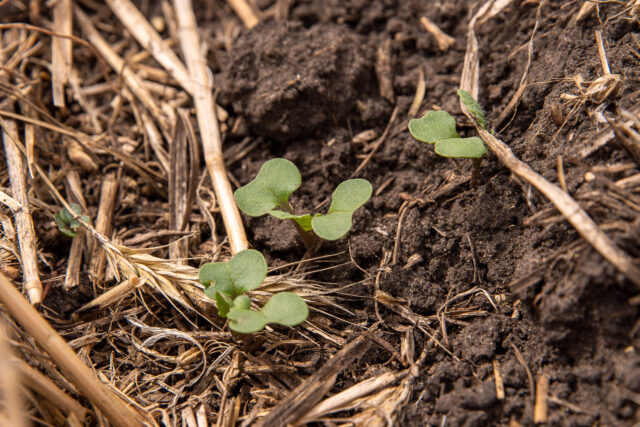
By Brianna Gratton
Regenerative agriculture practices support a sustainable management style of cropping and livestock systems to improve overall soil health, biodiversity and sustainability of food production. Applied research at Olds College focuses on the evaluation of technologies that support and assess the benefits of the regenerative agriculture. Evaluating technologies for remote grazing management and quantification of benefits of intensively managed grazing versus conventional grazing will make way for more efficient farmer practices. Likewise, the evaluation of crop cocktail blends will show the long-term improvements on soil and forage health, increasing profitability.
The ability of crop cocktails to improve soil health has been widely explored in previous research which has shown that they can drastically improve dirt quality. This research provides an opportunity to show farmers that crop cocktails grown on overused land can both improve soil health and provide excellent nutrition for cattle. Olds College plans to take this a step further by providing an example for local farmers to see which crop mixes work the most best to revitalize the soil and which mixes the cattle tend to favour while grazing.
The crop cocktail will be planted on land located west of Carstairs, Alta., on a 19-acre field. Each variety will be duplicated three times with nine strips total of two acres each. Prior to grazing, each variety will be tested for both yield and nutritional quality. The cattle will then be rotated through the pasture mixes in an intensive manner, allowed to graze no more than 50 per cent of the crop before being rotated out, giving the crop periods of rest for re-growth. These blends include a mixture of different clovers, plantain, chicory, vetch, turnip, forage rape, Italian rye grass, forage radish and oats.
To measure the effect on the soil, a soil health assessment is conducted in addition to a chemical soil test and will be repeated year after year.
By integrating the use of biomass imagery, soil sensors and microclimate sensors into the field, Olds College can better understand how the crop and soil react to the grazing. Simultaneously, through the use of GPS collars, fencing monitors, and water level monitors, Olds can precisely monitor the livestock and ensure that remote location is consistently secure and freshwater is available to the cattle.
By taking a new management approach, Olds College plans to improve the plant matter and feeding capability of this ground. This will allow cattle to have longer feeding times in pastures and less time in confined feeding operations, cutting costs and labour for the producer.
A full report on this project will be available later this fall.










